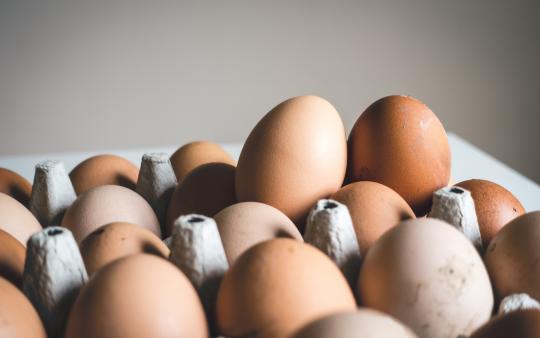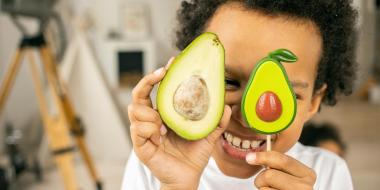We’re told, especially as we age, that it’s important to watch our cholesterol numbers. But other than vague warnings to make sure we don’t eat too many cheeseburgers and get enough exercise, what exactly we’re watching out for remains a bit of a mystery.
Cholesterol is a waxy-fat substance that is essential for many of our body’s processes. It makes up the cell membrane of each and every one of our cells and is vital to the production of hormones, vitamin D, and bile acids, and in the nerve insulation, myelin. It’s also helpful in tissue repair, including our response to stress and inflammation.
Because it’s a fat, cholesterol can’t move through our bloodstream on its own. Instead, the body packages it and other fats into a protein case so they can mix easily with our blood, making the transport of fats to various parts of the body much more streamlined. These particles, called lipoproteins, move around in many different forms, but it is our low-density lipoprotein (LDL) and high-density lipoprotein (HDL) that usually get the most attention.
LDL cholesterol is richer in pure cholesterol than other lipoproteins, as most of the triglycerides the particles had carried have been lost through the process of VLDL (very low-density lipoprotein) becoming LDL. It’s often referred to as the “bad” cholesterol because of its tendency to accumulate on the walls of the blood vessels, and accumulation can result in a narrowing of the arteries (atherosclerosis), leading to blockages, strokes, and heart failure.
Triglycerides: Fatty acids from your food that are transported to necessary body parts in a lipoprotein vehicle. In excess amounts, these fats will thicken the blood and increase clotting.
HDL cholesterol has the highest concentration of proteins to lipids. It is mainly secreted by the liver and tends to help the body to overcome the negative effects of LDL by sponging up some of the excess cholesterol from the arteries, which might otherwise hang around and create arterial plaque, and relocating it to the liver for disposal.
Did you know our bodies make most of the cholesterol we need? Our livers produce somewhere between 75-80 percent, and our diet makes up the rest.
So, what’s your number?
If you’ve gone for a cholesterol check, you’ve probably been given a list of numbers that correspond with your HDL, LDL, triglycerides, and the ratio between your total cholesterol and HDL levels. But what do those numbers mean? While the levels that we like to see in a patient vary depending on their health status, as a general rule, the following numbers are desirable:
- LDL: lower than 3.0
- Triglycerides: lower than 1.5
- Total cholesterol/HDL ratio: between 3.0–3.5 (the smaller the number, the better)
- HDL levels: higher than 1.4
But what if your numbers don’t line up? It is well-proven that maintaining a high level of HDL cholesterol and low level of LDL and triglycerides is best for good health, and if your numbers aren’t reflecting this, it may be time to rethink your diet, lifestyle, and incorporate a few quality supplements.
Medical Interventions: In some cases, medications like enzyme-inhibiting statins and cholesterol absorption inhibitors are called for in an effort to lower LDL levels. While these are effective, it’s important to note that they often come with side effects such as muscle pain and weakness, elevated liver enzymes, and decreased levels of co-enzyme Q10. Even if medications are prescribed, they should be taken as a part of a holistic health plan that includes dietary and lifestyle changes.
CHOLESTEROL GAME CHANGERS
Know Your Fats: Low fat or “fat-free” diets may seem like the way to go when trying to lower your cholesterol levels, but most foods so labelled contain hidden preservatives, chemicals, gums, sugars, and starches, making them less than stellar alternatives. Further, fat in our diet creates a sense of satiety, and if there is little or no fat in a meal, the result can be increase in caloric intake as we continue to eat to fill the void. Fat is one of the three essential macronutrients our bodies require for functioning, and is necessary for keeping our cell walls strong and flexible, for proper hormone functioning, to absorb and store fat soluble vitamins, and to help keep us warm.
Healthy fats include avocado, nuts, and full-fat yogurt. Aim for fresh and raw pressed oils and foods rich in omega-3s like oily fish (sardines, wild-caught salmon, and mackerel) and hemp, chia, and flax seeds. Avoid foods that contain saturated and trans fatty acids, such as fried foods and partially hydrogenated oils, and reduce your intake of dairy, and animal meats like beef, lamb, and poultry with skin.
It’s No Yolk! Eggs have been given a bad rap due to the fact that yolks contain cholesterol. But research shows that the dietary cholesterol in yolks doesn’t play a role in the cholesterol our liver produces (which relies on fats—and yolks only contain about 1.5 grams per serving). Egg yolks are nutrient-dense, antioxidant-rich, and loaded with vitamins and minerals, including calcium, iron, phosphorus, zinc, thiamin, B6, folate, and B12, fat soluble vitamins (A, D, E, and K) and essential fatty acids. The yolks are also good sources of antioxidants known to protect your eyes, brain, nerves, and blood vessels. One egg a day is generally safe for most people, so get crackin’!
Fibre Boost: Not just for promoting regularity, increasing your fibre intake can help lower cholesterol levels as well. Soluble fibre – found in oats, flax seed, citrus, apples, and beans, to name a few – forms a gel-like material that attracts water, slowing digestion so you feel full longer. Additionally, more fibre means more bile production which encourages vitamin absorption, waste elimination, the breakdown of fats. Studies have shown that it may help lower LDL cholesterol levels, and that it may be able to help reduce blood pressure and inflammation.
Slake Your Thirst: Limit caffeine and alcohol (there is some evidence that high amounts of alcohol may increase triglyceride levels) and ensure you are getting eight cups of fresh water daily to help flush out the bowels and improve digestion.
Get Your Greens: Increase your intake of veggies, including garlic and onions which may help reduce LDL cholesterol levels.
Curb Carbs and Sugar: Reduce consumption of refined sugars and carbohydrates, as current research has shown that they not only increase the risk for diabetes, they can also increase triglyceride levels. Processed and packaged foods are loaded with them, so opt for whole foods and cook from scratch as much as possible.
Move More: Exercise is an essential part of any treatment plan including those designed to decrease cholesterol. Research has shown that both aerobic and anaerobic activity will decrease LDL and triglyceride levels and help increase HDL levels.
Supplemental Support
Co-enzyme Q10 is a powerful antioxidant that can help the body by protecting LDL from being oxidized (a major contributor of heart disease). CoQ10 is necessary to energize the mitochondria in our heart cells and may also help lower blood pressure.
Omega-3 Fatty Acids, readily available in fish oil supplements, flax oil, and hemp seeds, are key to increasing HDL and helping reduce LDL and triglyceride levels in the body by keeping omega-6 acids in balance. While our bodies require omega-6 for energy, the typical Western diet contains far more than needed, and an overabundance of omega-6 can lead to inflammatory conditions in the body. (Omega-3 fatty acids are also important for your child!)
Phytosterols, also known as plant sterols, are compounds commonly found in small amounts in foods such as grains, nuts, fruits, and vegetables, and closely mimic cholesterol in the body. They can help lower LDL levels by interfering with the intestinal absorption of cholesterol.
Red Yeast Rice has been shown to improve HDL and decrease LDL levels. Most formulas containing red yeast rice will also contain several herbs and nutrients that complement the formula and work to help balance out lipid levels.
Keeping track of your numbers is critical for good health. Talk to your healthcare provider about your cholesterol levels as they’re in the best position to help offer advice on supplementation, lifestyle, and exercise options that are right for you and your specific situation.






